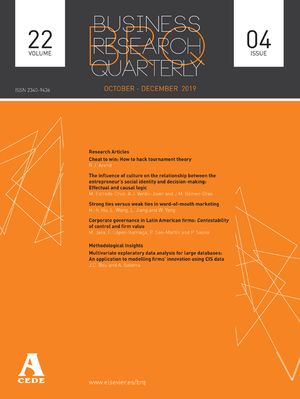La relación entre intangibles tecnológicos y resultados ha sido ampliamente estudiada. Sin embargo, son pocos los trabajos que han tratado de analizar si la forma en que se produce la acumulación de dichos recursos modifica sustancialmente el efecto que previsiblemente la inversión en intangibles tecnológicos tiene sobre los resultados empresariales. En este sentido, los argumentos teóricos utilizados nos llevan a considerar que la utilización de uno u otro método de desarrollo (interno, externo o mixto) afecta de forma distinta al stock de activos tecnológicos de la empresa y, como consecuencia, a los resultados alcanzados por ésta. Las hipótesis resultantes del planteamiento teórico son contrastadas mediante un panel de empresas manufactureras españolas. Los resultados obtenidos permiten observar cómo la acumulación de activos intangibles tecnológicos es un factor relevante a la hora de explicar los resultados empresariales. Asimismo, se comprueba cómo el método de desarrollo utilizado para acceder a dichos activos influye en la intensidad con la que el gasto en I+D actúa sobre los resultados empresariales.
The relationship between intangible technological assets and firm performance has been widely studied. Nevertheless, few works have tried to identify whether the way in which these intangible resources are acquired substantially modifies the foreseeable effect that the investment in technological intangible assets has on firm results. In this sense, the theoretical arguments employed suggest that the development method used (i.e., internal, external or mixed) affect the stock of technological assets of the company and, therefore, the results obtained. The hypotheses derived from the theoretical approach are contrasted using a panel of Spanish manufacturing companies. The results obtained prove that the accumulation of technological intangible assets is a relevant factor to analyze firm results. Also, it is verified that the development method used to acquire these assets influences the impact of R&D expenditure on firm results.
Los autores muestran su agradecimiento a los profesores Zulima Fernández, Juan Ventura, Emilio Huerta, Cesar Camisón, Esteban García Canal y Agustín Ruiz. Los datos para la realización del trabajo fueron proporcionados por la Fundación SEPI. Este trabajo ha sido financiado con la Cátedra Iberdrola en Dirección y Organización de Empresas de la Universidad Rey Juan Carlos y por la Universidad de la Rioja (ayudas de tesis ATUR 02/45 y ATUR 03/37).




